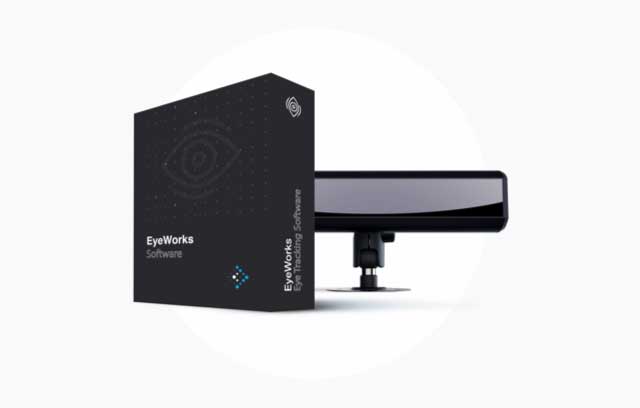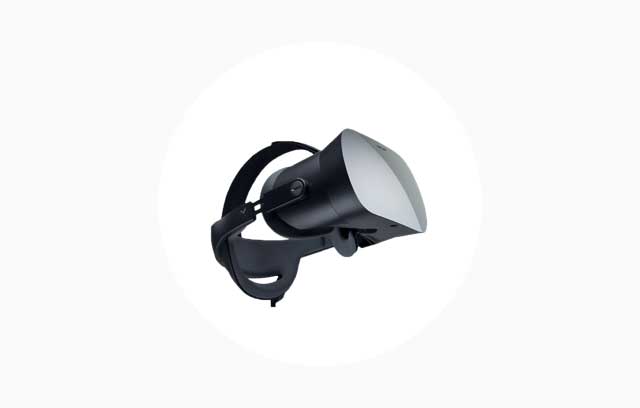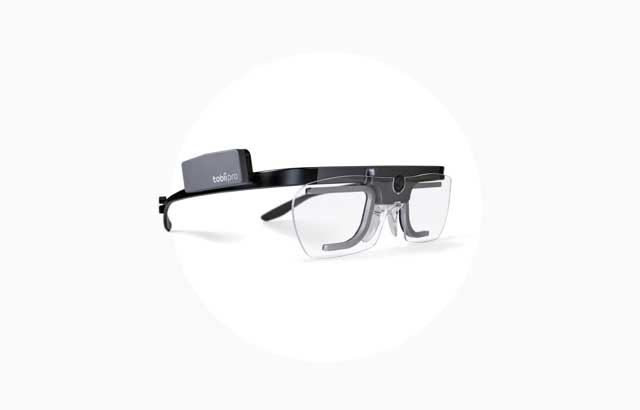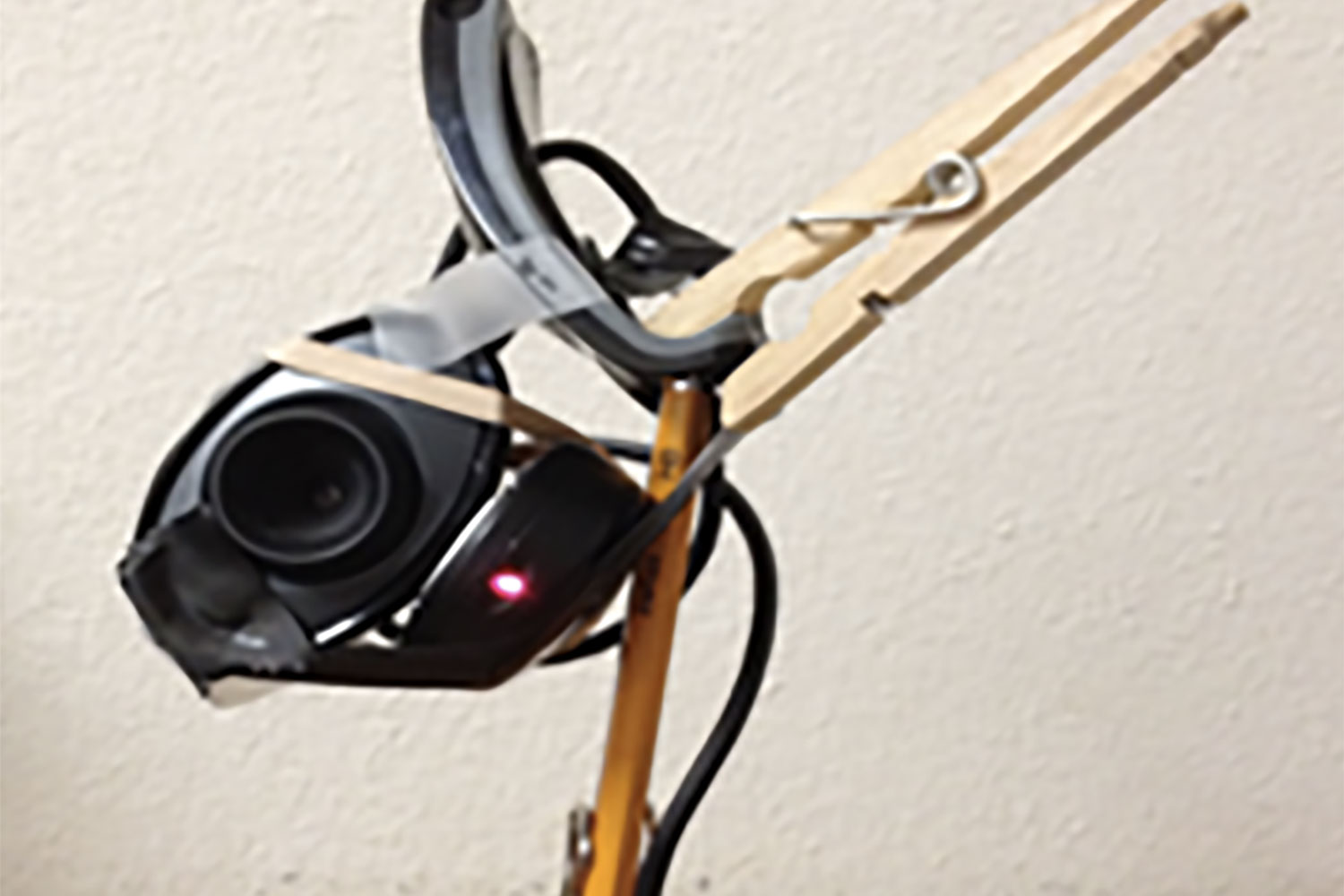If you’ve explored eye tracking as a research technology, then you’ve probably noticed the extreme variability in the cost of eye trackers. These aren’t laptops we’re talking about, where a higher-end model can mean an extra few hundred dollars. The cost of one piece of eye tracking hardware versus another can vary by tens of thousands of dollars.
Take a look at the system pictured here (which I just invented). It’s made from an old web cam, a clothespin, a laser pointer, three pencils and some scotch tape. It doesn’t work at all, but the cost is unbelievably low! All kidding aside, the point here is important to consider – What is an acceptable tradeoff between cost and quality? Is a lower-end eye tracker going to provide you with good enough data to meet your research objectives? These are crucial questions for anyone interested in equipping an eye tracking lab.
In the video embedded below, we’ve used three different eye trackers – representing three different price points – to track the eyes of a participant completing a visual following task (not simultaneously; these are three separate runs). On each clip we’ve rendered raw eye data with a 500 ms gaze trail instead of fixations to accentuate the differences in data precision between the three systems. The costs of the eye trackers shown in this video range from relatively inexpensive to very expensive. Click the video to watch.
The most notable difference is precision. All three eye trackers are in the general vicinity of the targeted yellow dot, but you’ll notice much more ‘noise’ in the data from the lower cost systems. The point-of-gaze does not move smoothly; it bounces around quite a bit, especially in the example on the far left. Does this mean that the tracker on the left isn’t right for you? Maybe. Maybe not. If you need pinpoint precision in your data, then this system probably won’t cut it. However, if you’re interested in a more general analysis of eye data, then you might be able to live with the extra noise. Whether or not you can get by with a lower cost eye tracker is heavily dependent on how you plan to use the data.
What about the Medium Cost system in the video? That precision doesn’t look so bad compared to the Higher Cost system, right? That may be true, but there is more to it than just accuracy and precision. The image below shows the left (yellow) and right (green) pupil diameter for all systems during the task shown in the video above. Those colorful pinstripes in the Lower Cost and Medium Cost systems demonstrate instability in the tracking of the pupil. Now look at the data timeline for the Higher Cost System – perfectly stable, no dropped data. In our experience the higher end systems tend to do a better job keeping track of pupil size and orientation. Again, this may or may not matter to you, depending on your research goals.
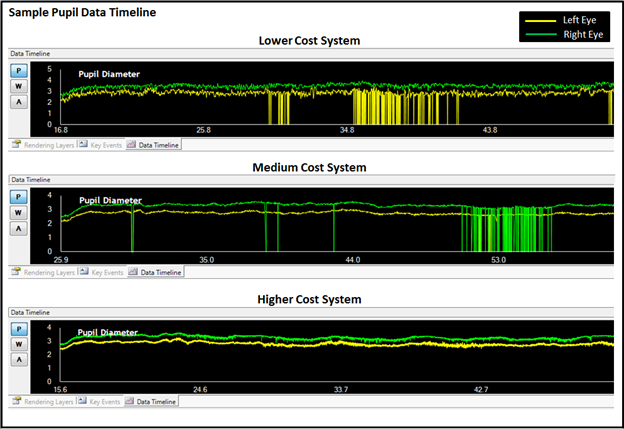
Another distinction to consider is sampling rate. The Higher Cost system that we’ve featured samples at three times the rate of the Medium Cost system and five times the rate of the Lower Cost system. Do you need all of those additional data points? Is it worth the associated hardware costs? Think about that before you make your decision.
There are many factors that drive the price of eye tracking hardware – usability, flexibility, support, compatibility with advanced modules (e.g. scene camera, multi-display, cognitive workload, etc.). In most (though not all) cases the higher end systems make use of more precise data to offer a more robust solution. And yet, that doesn’t mean we’re recommending that you break the bank to make sure that you have all of the most advanced equipment. We are simply saying this: if you want to know how much you should spend on an eye tracker, you must first consider what you’ll be asking that system to do. As in any business decision, a cost-benefit analysis is worthwhile.
Feel free to contact us with any questions about hardware, software or eye tracking technology in general.

